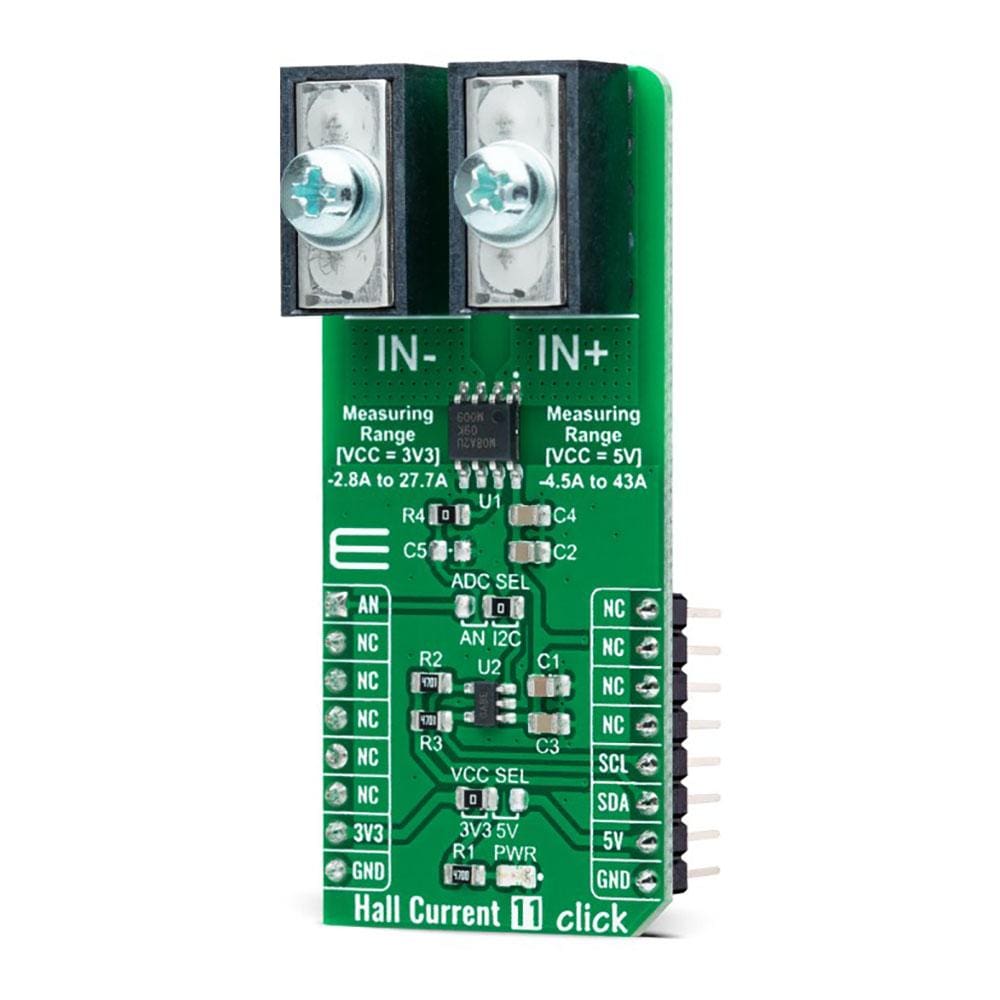
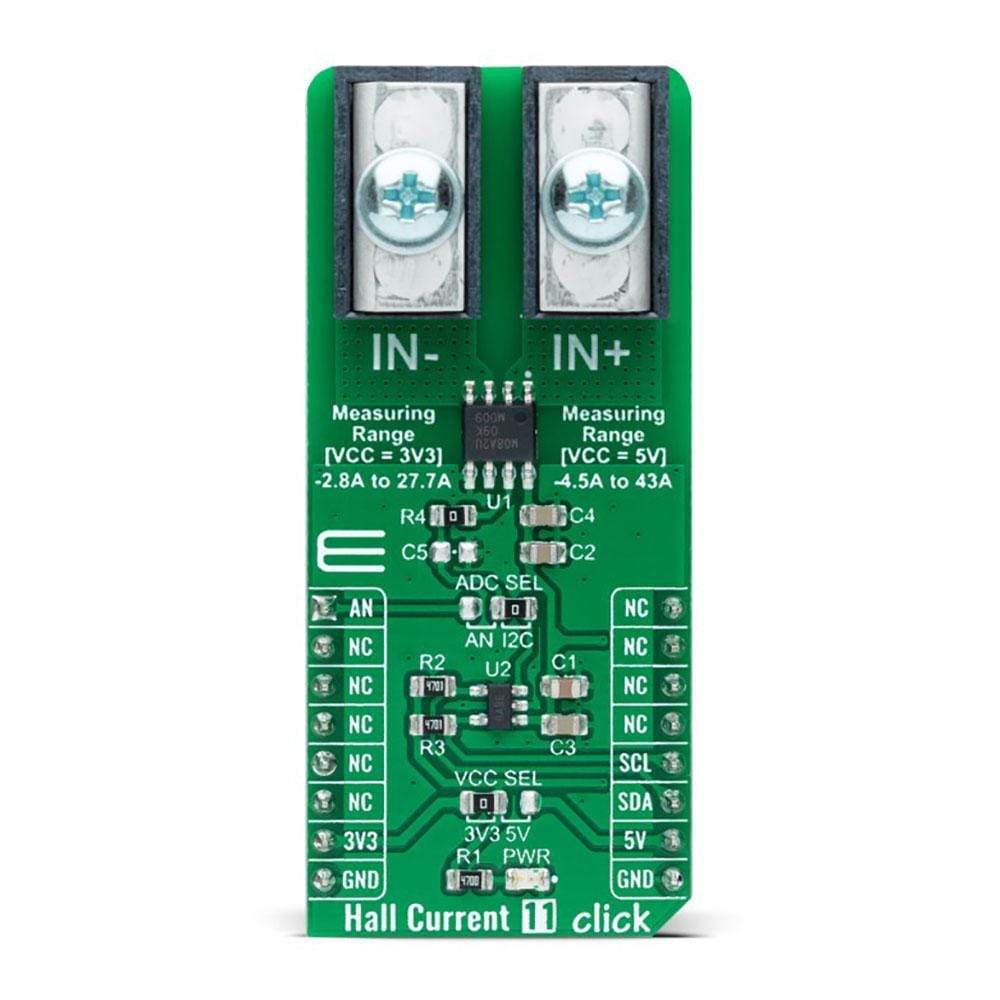
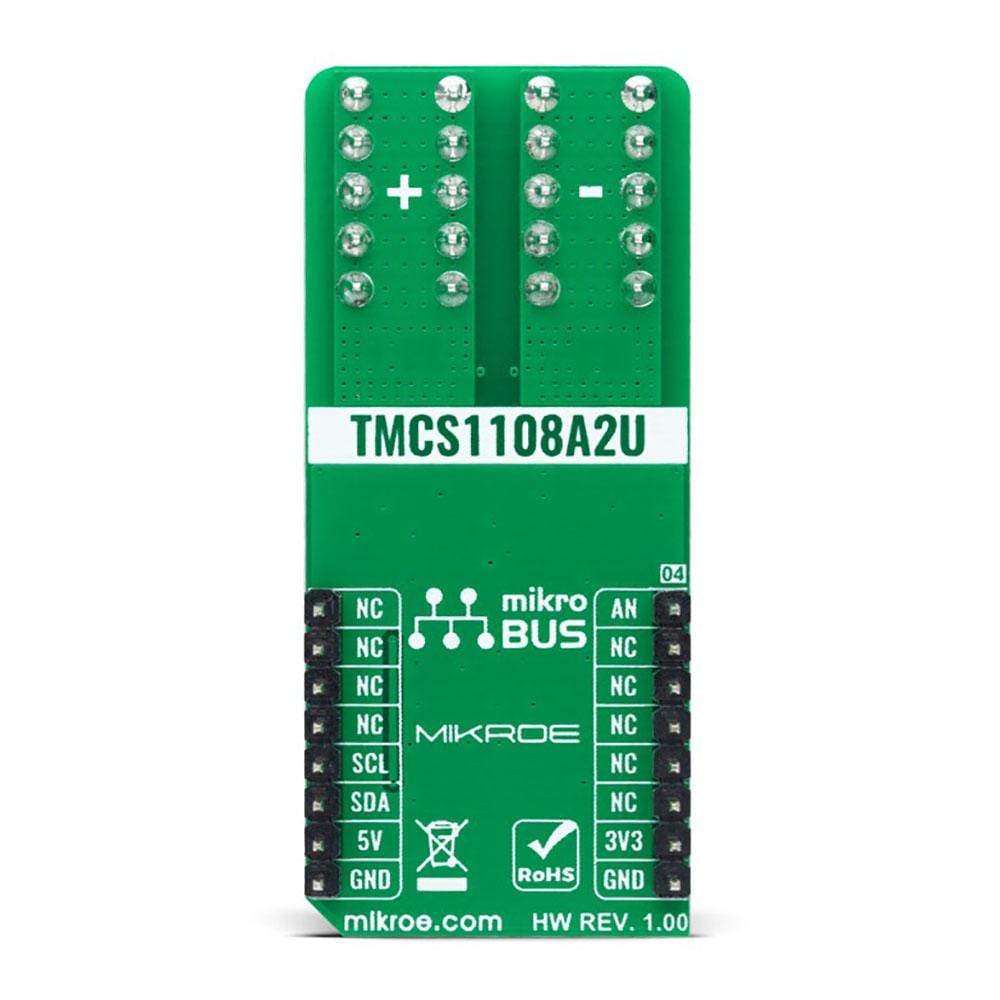
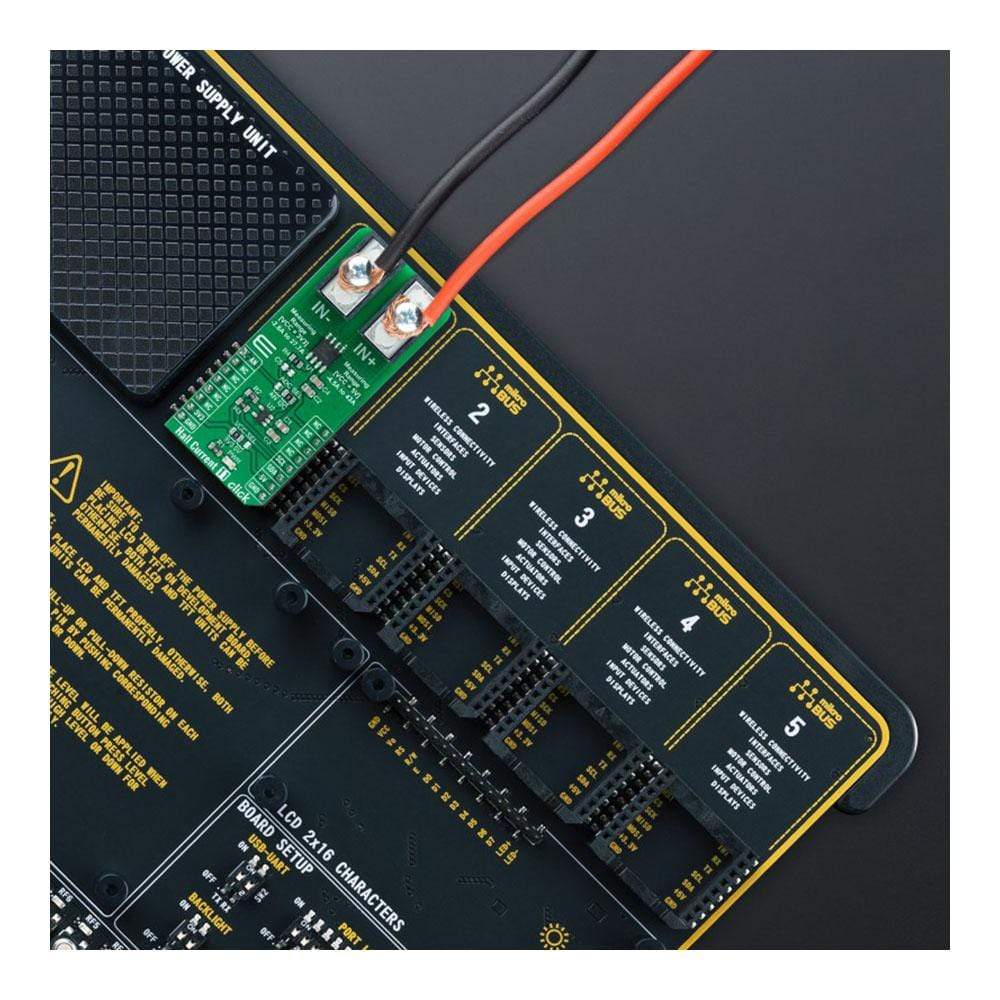
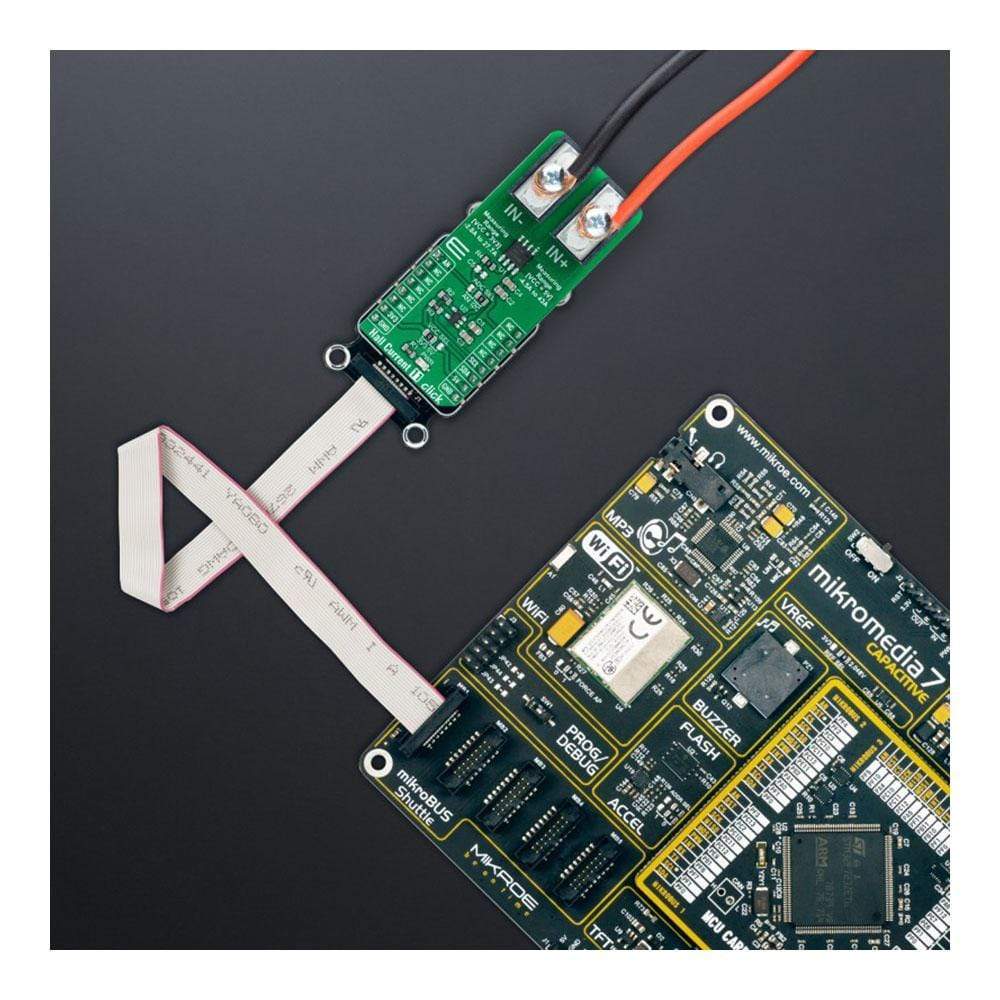
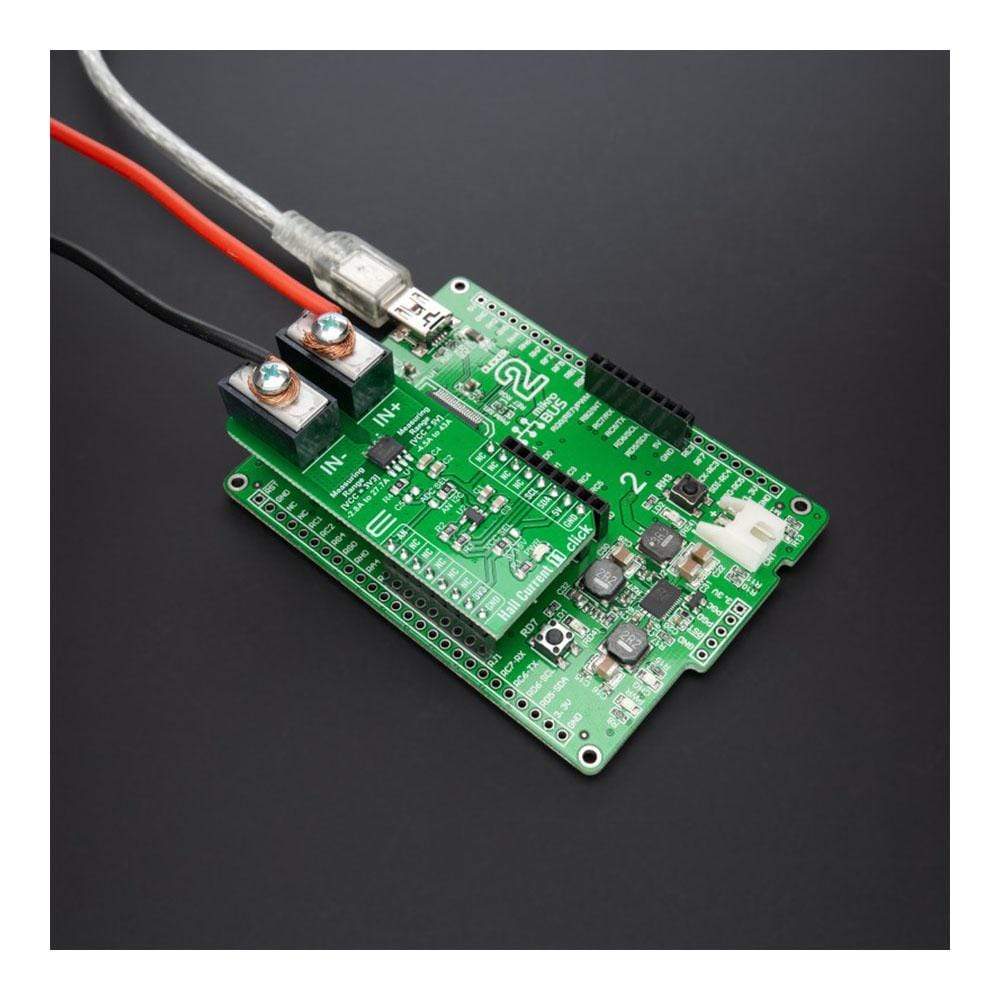
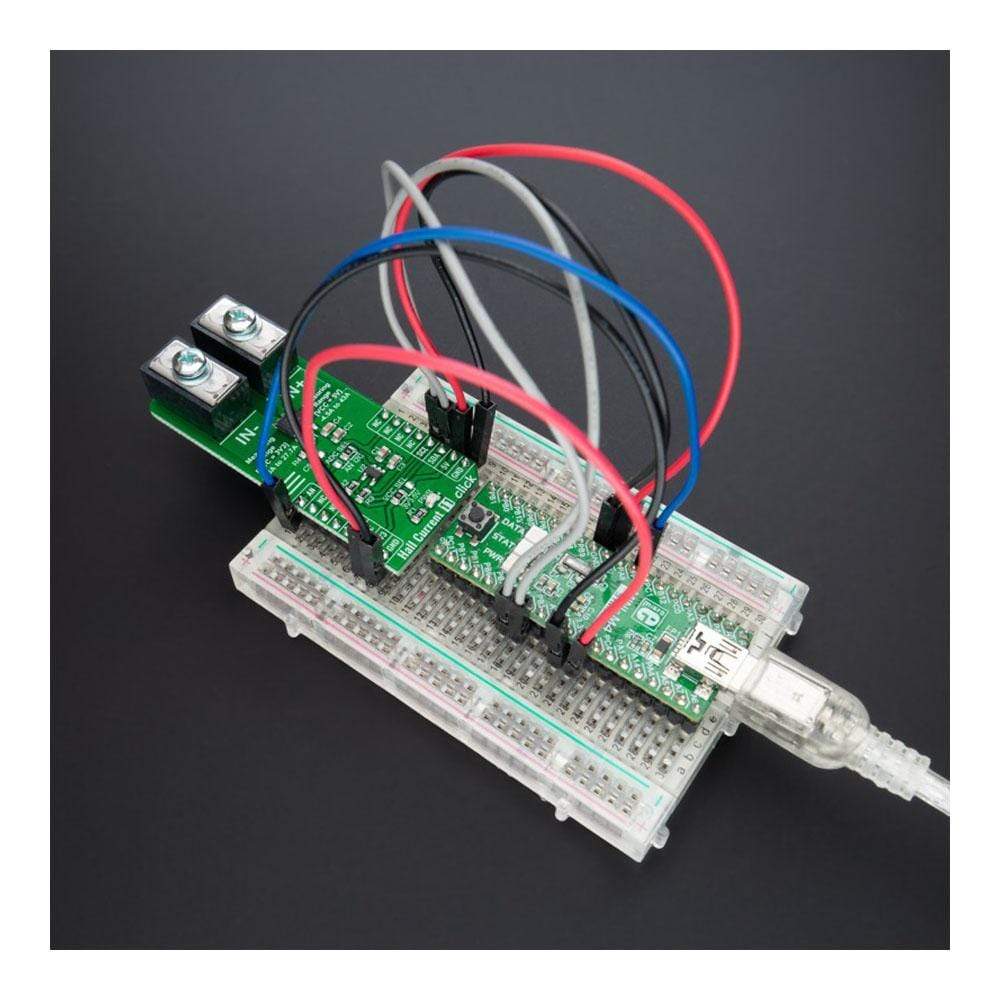
Overview
The Hall Current 11 Click Board™ is a compact add-on board that provides economical and precise AC or DC current sensing solutions. This board features the TMCS1108A2U, a galvanically isolated Hall-effect current sensor with high accuracy, excellent linearity, and temperature stability from Texas Instruments. The input current flows through an internal 1.8mΩ conductor that generates a magnetic field measured by an integrated Hall-effect sensor. It features a 100V functional isolation working voltage with both unidirectional and bidirectional current sensing. Based on the selected logic voltage VCC, the TMCS1108A2U allows the user to measure current in two appropriate ranges, where after that, can process the output signal in analogue or digital form. This Click Board™ is suitable for AC or DC current-sensing in industrial, commercial, and communications systems.
The Hall Current 11 Click Board™ is supported by a mikroSDK compliant library, which includes functions that simplify software development. This Click Board™ comes as a fully tested product, ready to be used on a system equipped with the mikroBUS™ socket.
Downloads
Le Tableau à clic Hall Current 11™ est une carte complémentaire compacte qui fournit des solutions de détection de courant alternatif ou continu économiques et précises. Cette carte comprend le TMCS1108A2U, un capteur de courant à effet Hall isolé galvaniquement avec une grande précision, une excellente linéarité et une stabilité de température de Texas Instruments. Le courant d'entrée circule dans un conducteur interne de 1,8 mΩ qui génère un champ magnétique mesuré par un capteur à effet Hall intégré. Il dispose d'une tension de travail d'isolation fonctionnelle de 100 V avec une détection de courant unidirectionnelle et bidirectionnelle. En fonction de la tension logique VCC sélectionnée, le TMCS1108A2U permet à l'utilisateur de mesurer le courant dans deux plages appropriées, après quoi il peut traiter le signal de sortie sous forme analogique ou numérique. Cette Click Board™ convient à la détection de courant alternatif ou continu dans les systèmes industriels, commerciaux et de communication.
Le Hall Current 11 Click Board™ est pris en charge par une bibliothèque compatible mikroSDK, qui comprend des fonctions qui simplifient le développement logiciel. Cette Click Board™ est un produit entièrement testé, prêt à être utilisé sur un système équipé du socket mikroBUS™.
| General Information | |
|---|---|
Part Number (SKU) |
MIKROE-4797
|
Manufacturer |
|
| Physical and Mechanical | |
Weight |
0.02 kg
|
| Other | |
Country of Origin |
|
HS Code Customs Tariff code
|
|
EAN |
8606027383717
|
Warranty |
|
Frequently Asked Questions
Have a Question?
Be the first to ask a question about this.







